Inside the Mind of Joe Haddad
A multidisciplinary designer based in New York City, Joe Haddad is a modern day Renaissance man with interests that spans art, design, history and cuisine. We chat with him through Zoom, him in Connecticut and us in New York City, all socially distanced, which is how one does these days.
Hui: We’re so excited for this conversation today! We initially met through Instagram; I knew that we both attended SVA (School of Visual Arts) together and have quite a few mutual friends. I also admire you very much for your amazing design work and your cooking Instagram Stories! But before we get into that could, you tell us a little bit about yourself?
Joe: Well, I grew up in this backyard in Connecticut. It’s a commuter town, where you take the Metro-North into the city. It's pretty bougie and preppy [laughs].
My dad is a still life photographer and he’s had his own studio in Chelsea before I was born. That was a big cornerstone in my creative life. I have a very early memory of the hustle and bustle at the studio; people there seemed so cool and different. I’ll never forget that one night when I was around nine, my dad and I popped into the elevator and instead of going down, we went up. The top floor was someone’s loft and the elevator opened on a man with a crown and scepter, with a sprawling party behind him. My nine-year-old mind was like, “There is another secret life happening here!”
Both my parents are creative, my mom works in sales and she’s the one that got me into cooking. My childhood was very creative. Whenever I had an interest in anything, they would try to direct me without forcing me to pursue it.
“The play of the digital and the physical, the real and the false; that really appeals to me.”
I knew I wanted to go to art school in New York; I wanted to live the sort of life I witnessed when I was a little kid. My freshman summer at SVA, I really wanted to stay in NYC, so my parents said I’d better get a job to pay for an apartment. I ended up working at Deutsch then, which was an advertising agency. My manager there really valued the role of design within an ad agency. Lynne [Yun], who we both know, was working there at the time and woke me up to type history and type design as a very important foundation of design. Both of them were integral when I was young and trying to figure out what I wanted to do. After that I interviewed with the GrandArmy guys, whose USPS rebrand I really admired. I ended up interning there during Christmas break, and joined full time not long after.
It sounds like a linear journey and in some ways it was, but right now I’m feeling a need to diverge in some way. Before the pandemic, I felt like I was at a crossroads and I needed to do something to sabotage that. Now that we’re in quarantine, I'm happy to have a job. I don’t really know what the next step will be.




Hui: We are fans of your work, and I had a very visceral memory the first time I saw the AWAC (Aerial Early Warning and Control) poster. The ancient maps and the aircraft hints at something progressive and dystopian at the same time. The colors and details of the UI for the controls has a balance of functionality and something aesthetically pleasing. Can you tell us a little bit more about that?
Joe: AWAC’s a funny word. I’ve always loved model-making and miniatures; I’m intrigued by the idea of weathering. When you watch Star Wars and realize how they built the spacecraft and the process they go through to make it look like it is of a place; it’s embedding history in objects. I’ve always been obsessed with that. I got really into building Gundam kits. GrandArmy gives us a tech bonus every year that you can use to improve your skills. I used mine on an airbrush for my Gundam plastic models. The plane [on the AWAC poster] started as an exercise in airbrushing digitally. I was creating the plane with the Gradient Mesh Tool on Illustrator, trying to simulate the airbrush in digital space. The polyhedrons on the corners of the posters, those are created with real abstract airbrush paintings that I made, scanned, and wrapped around actual polyhedron sculptures. The play of the digital and the physical, the real and the false; that really appeals to me. It’s like you’re in on the joke, poking fun at the artifice of the digital. The chrome plane with the sparkles plays on that idea, too; it’s so perfect that it’s silly.
Hui: We’ve noticed that a couple of your design pieces surround the topic of space, the solar system, and things of that sort. We’re oddly attracted to the combination of all these elements and would love to know more about your interest in those topics and how you transfer them into artifacts of your design.
Joe: I have a zine buried in my site that was about primitive models of the universe. Ancient Greeks thought we revolved around a “Central Fire.” Roman Catholics believed that the Earth was the center of the universe. There are all these great models. Ancient civilizations got a lot of stuff right, they would match these precise mathematical models with observations.
Then recently we’ve been working on Supercluster, which is a pet project of the studio, as well as our partners. It’s an editorial site that also serves as a testing ground for all of the narratives of space we wanted to tell. A couple of years ago, we went on pitching cycles, where we finally approached Dropbox. We built a pitch deck for our dream site, stories we wanted to tell, things we wanted to make, and Dropbox graciously agreed to fund the site, in exchange for getting content about us creating the site. So we teamed up with A24; who we’ve worked with for a long time. They've been amazing partners with us in powering the site.
Our goal is to tell better stories about what's happening in outer space. There's amazing things happening but the stories haven’t been told in the right way. The 60’s and 70’s mythologized the space race; the average person then knew what Sputnik was. The collision of science and mythology is also what a lot of my personal work is about too. In some ways, we’ve come back to that now, with privatized space travel; with what Elon Musk is doing with SpaceX and with the Artemis program. What we found is that there are a lot of amazing stories being told by scientists and engineers, and that they’re being told for people in that community. What if we can tell those stories and collide that amazing scientific research with great storytellers in the design and advertising world, and tell those stories in a way that appeals to everyone and gets people excited about what’s happening? That's how Supercluster was born.
“Type is the perfect intersection of history, culture, and technology.”
We’re constantly building new tools for the site. The heart of it is the launch tracker, that tracks every rocket launch happening around the world in real time. It also gives you simple, bite-sized information, but allows you to dive deeper as well, live streams, and an amazing team of space photographers who document everything. There’s tons of work underway right now to build this massive archive of knowledge for people. Space has always been in my life.
I designed the site with two other designers at GrandArmy, and we worked with amazing web developers. For me, the most important thing with the site was the typefaces and the color, having big fields of yellow. For me, I wanted drama. If you’re a 12-year-old and you land on the website, and there are big ticking numbers and this big yellow field, you feel this is it! This is the hub of space knowledge. The aesthetic creates a sense of drama but also empowerment for the user. And you want to feel empowered when you’re engaging with unfolding sections and dropdowns, panels and videos. If you can make somebody feel like they are in mission control, they’re more interested in learning.




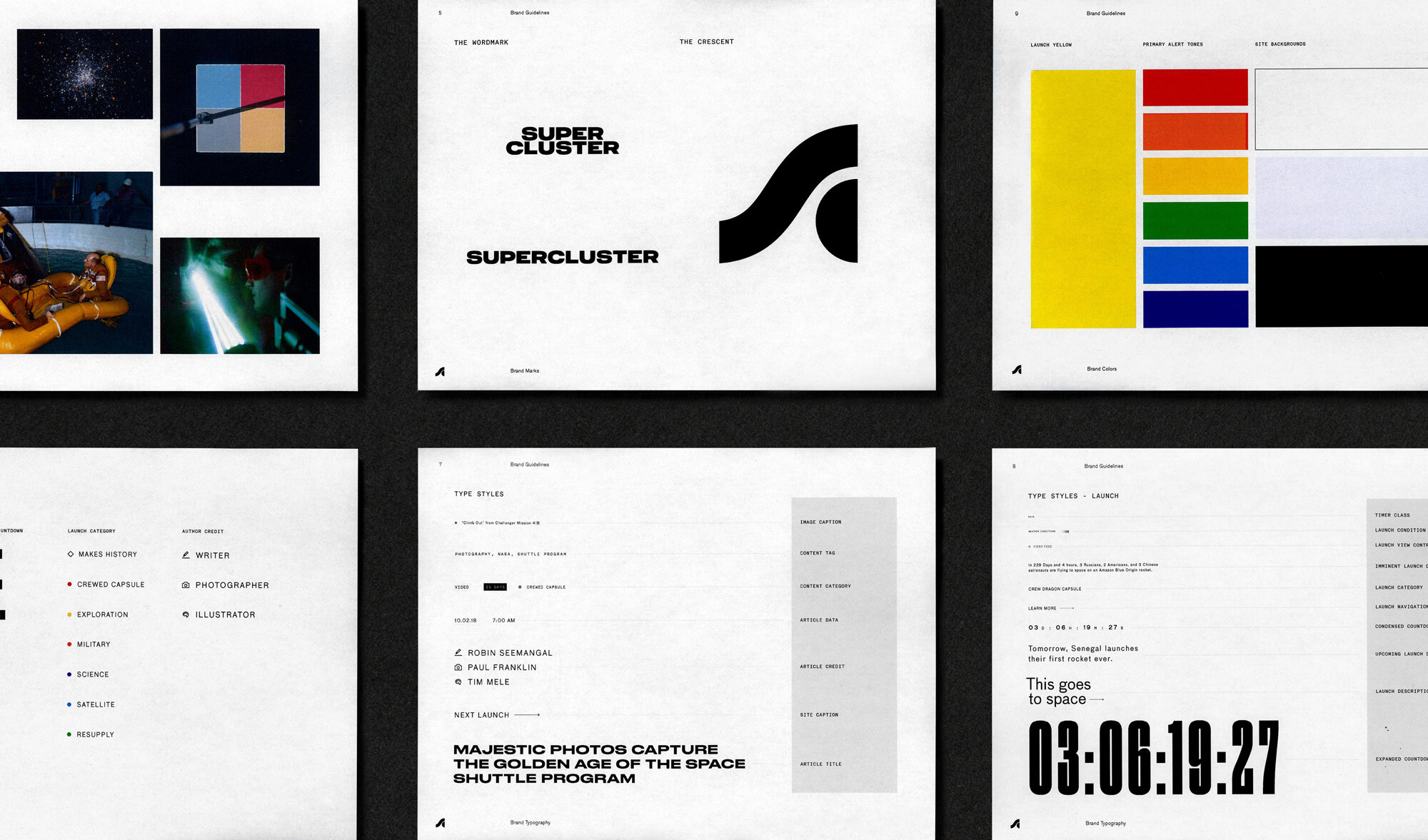

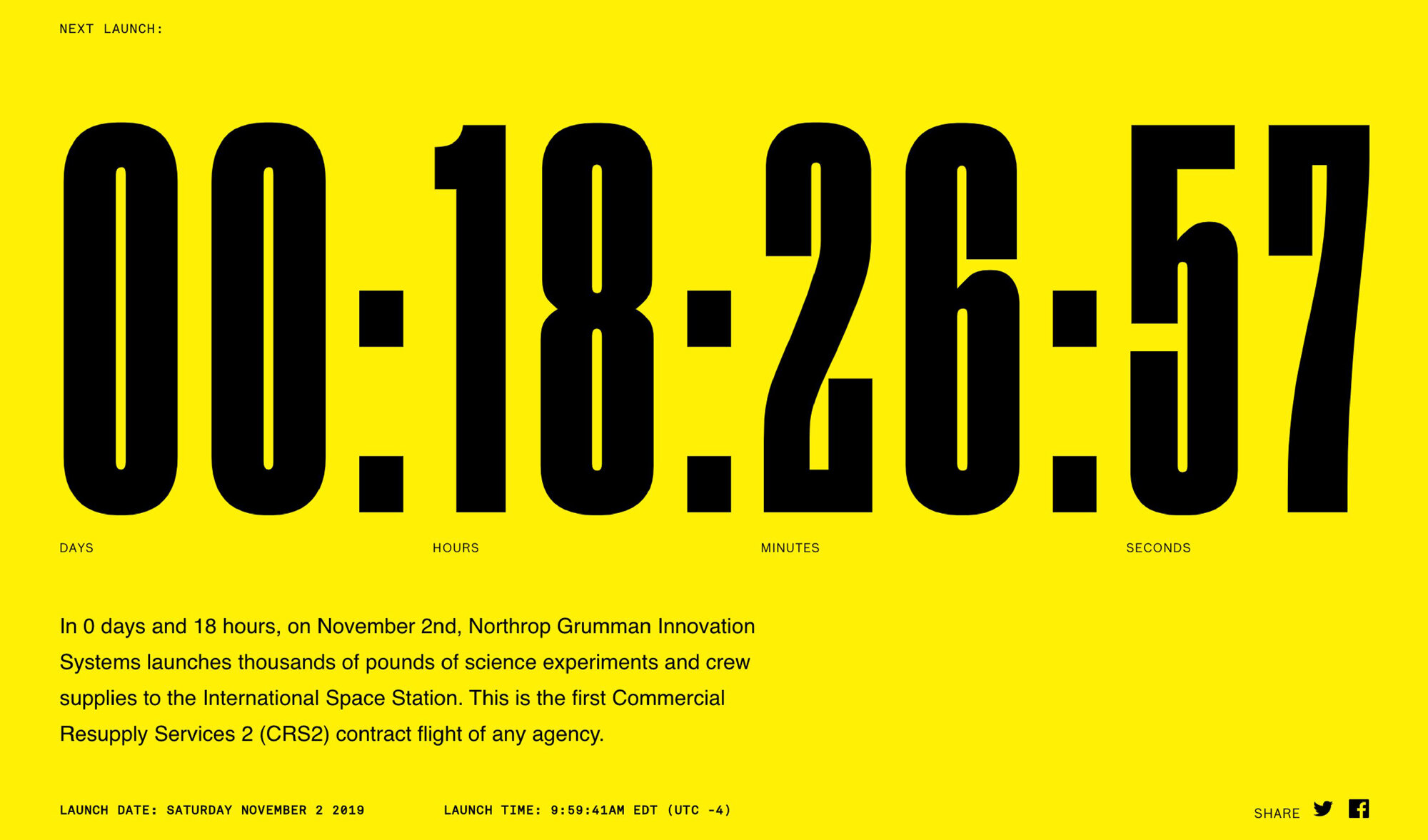
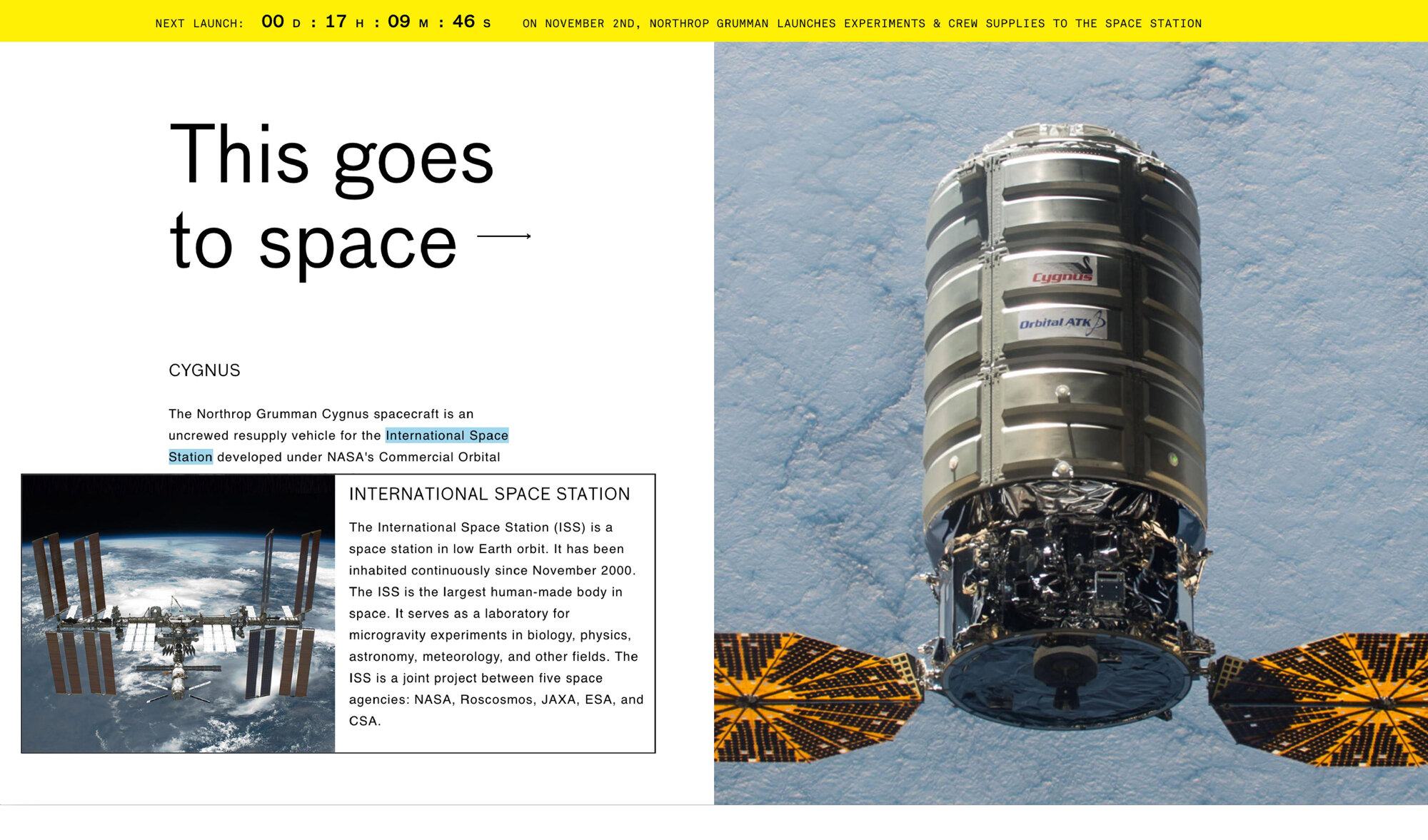


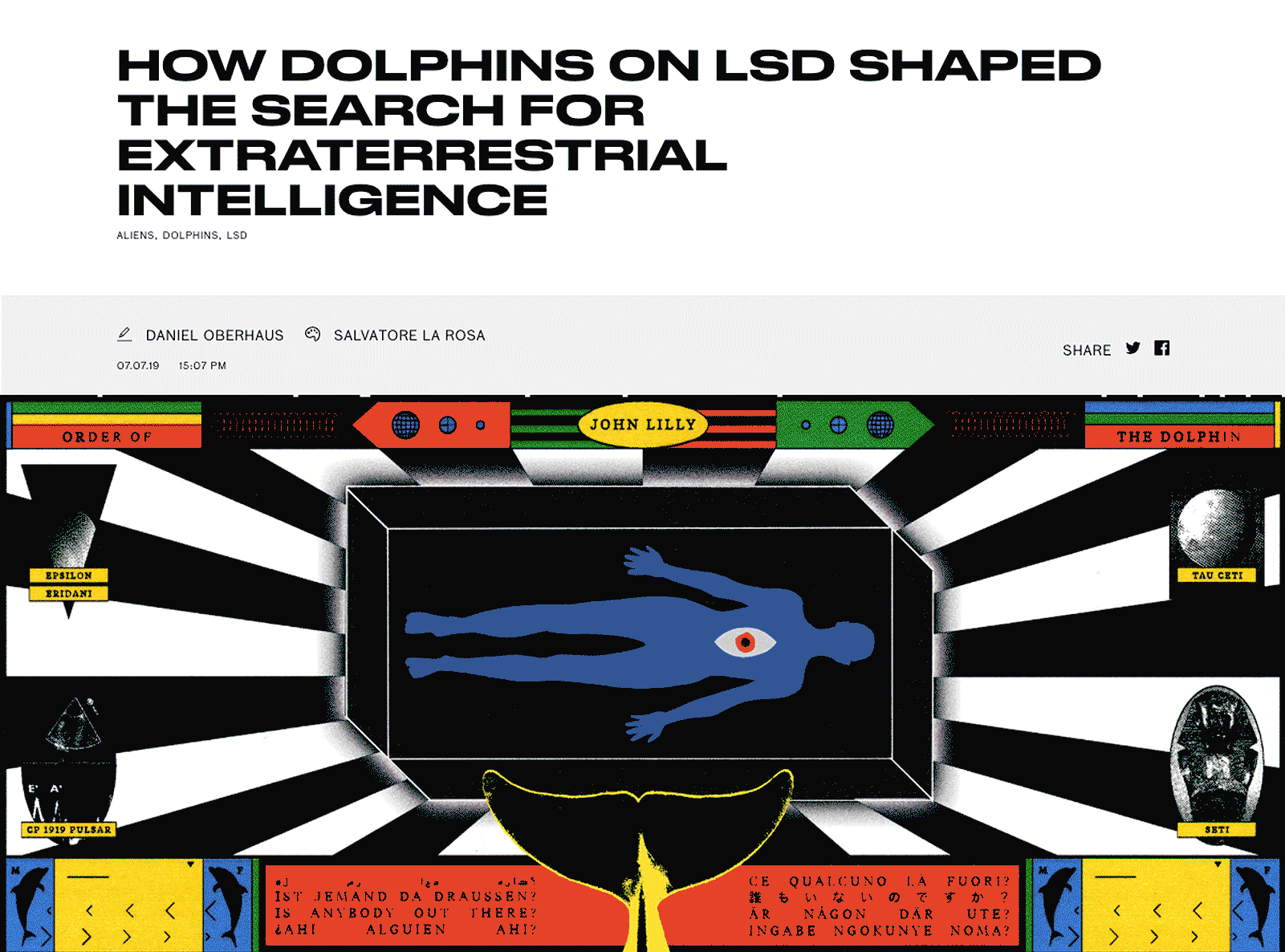
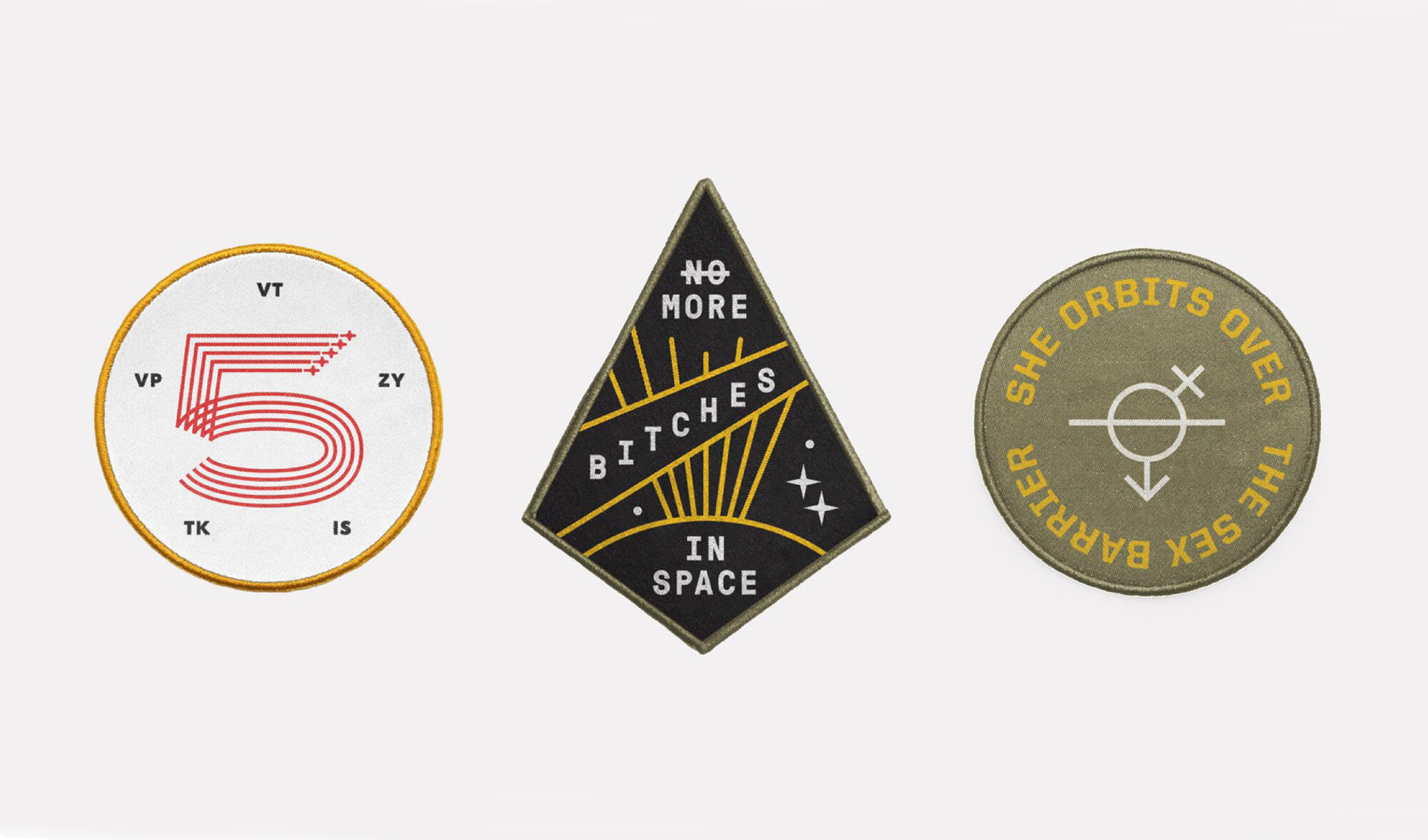



Hui: You also experiment a lot with type. From your oeuvre of work, there’s explorations in various vernaculars of type, from the blackletter typeface Regolith, to the airbrushed 70’s script lettering for Chariot. What draws you to type and why are you endlessly interested in it?
Joe: Type is the perfect intersection of history, culture, and technology. I had an amazing professor at SVA named Paul Shaw, who runs a great blog and worked with the Type Directors Club back then. He was definitely the hardest professor I had at SVA. He always positioned type as being informed by the technology of the time, by tastes and cultures, and then by what was being typeset. Woodblock type was something that always preoccupied me, and sort of the cornerstone of the identity I created for Gimlet media. Woodtype came about because of the invention of the lateral router. This tool allowed people to more easily carve forms into wood. Instead of a master cutter working with minuscule pieces of bronze, more people could fool around and make their own things. Wood was cheaper and lighter. Instead of ending up with having these stationary type foundries, we get people who would accumulate and collect wood type, and would travel town to town and create broadsides. Mid to late 1850’s woodtype was this zany world where the practice opened up from master cutters to wacky people who wanted to create type with 8 layers of filigree and 3D chunks. The way that was informed by technology and accessibility is very compelling to me. Whenever I make custom type, via a typeface or a piece of lettering, that is usually where it comes from. How can I link whatever I’m making conceptually to history, to technology, and how that speaks to culture.
To go back to the Gimlet example, in my mind Gimlet is a podcast studio; they’re crafting stories, they’re editing chunks of sound effects, audio, interviews, recordings, stories. To me, that speaks to a very material idea of language. You’re moving chunks around, constructing compositions almost. You look at the Dadaists Hannah Höch, Hugo Ball, Kurt Schwitters that’s quite literally what they were doing. They were carving apart chunks of newspapers and taking wood blocks and stamping. They were literally making language material. I thought what more perfect metaphor for crafting audio stories? That’s a good example of my process with type. Where there is a connection to history and there’s an aesthetic consequence of that connection. That’s my dream way of working with type, you can align all of these things together and create a vast story and network.

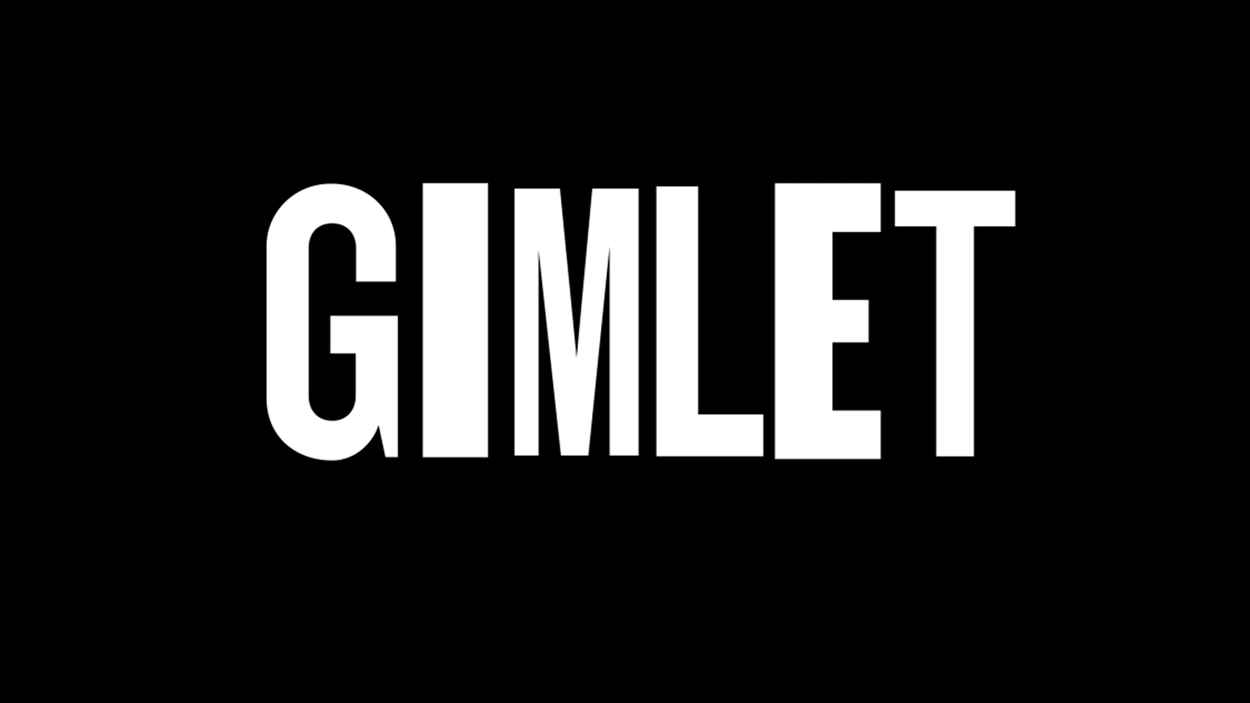


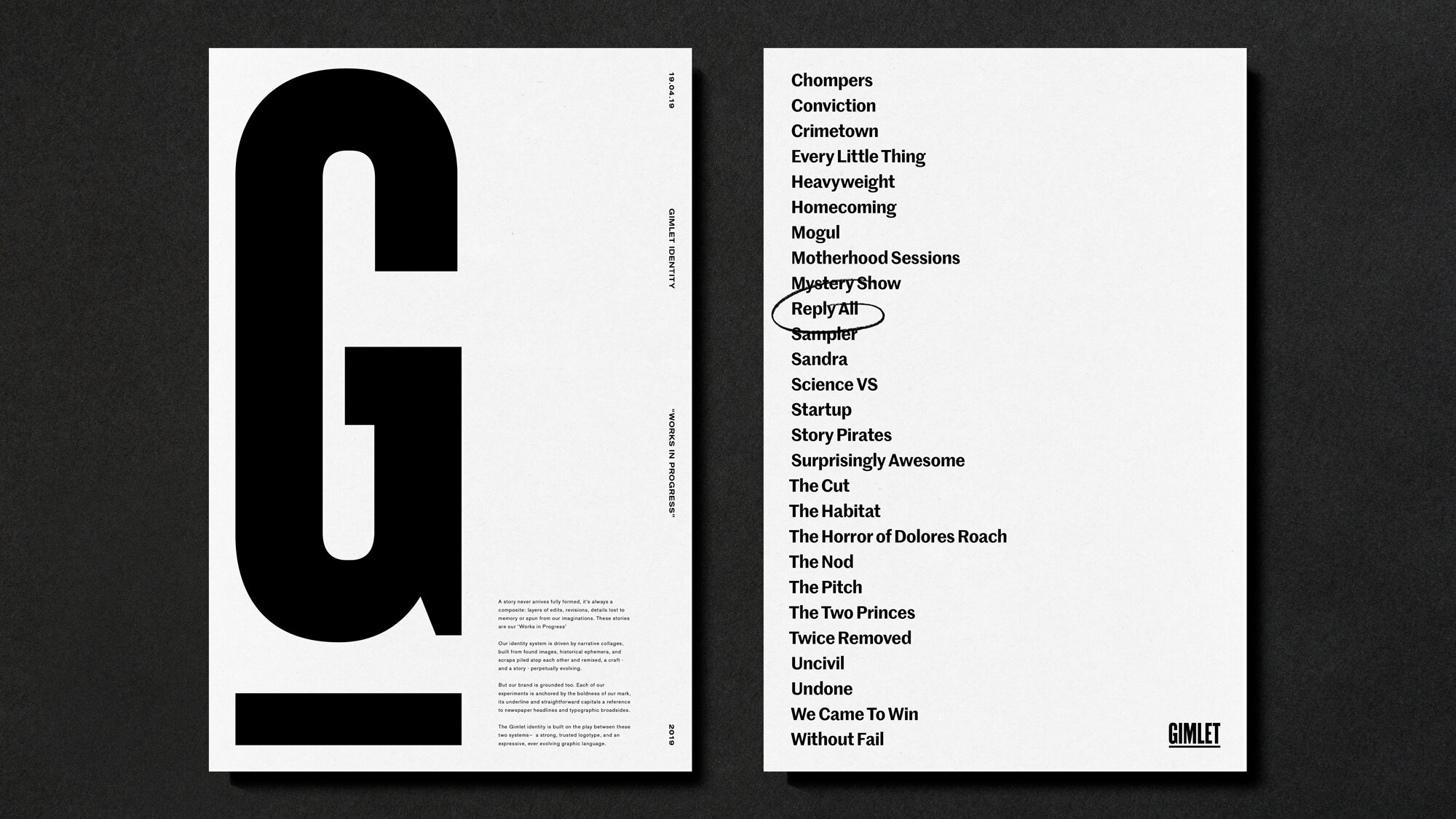

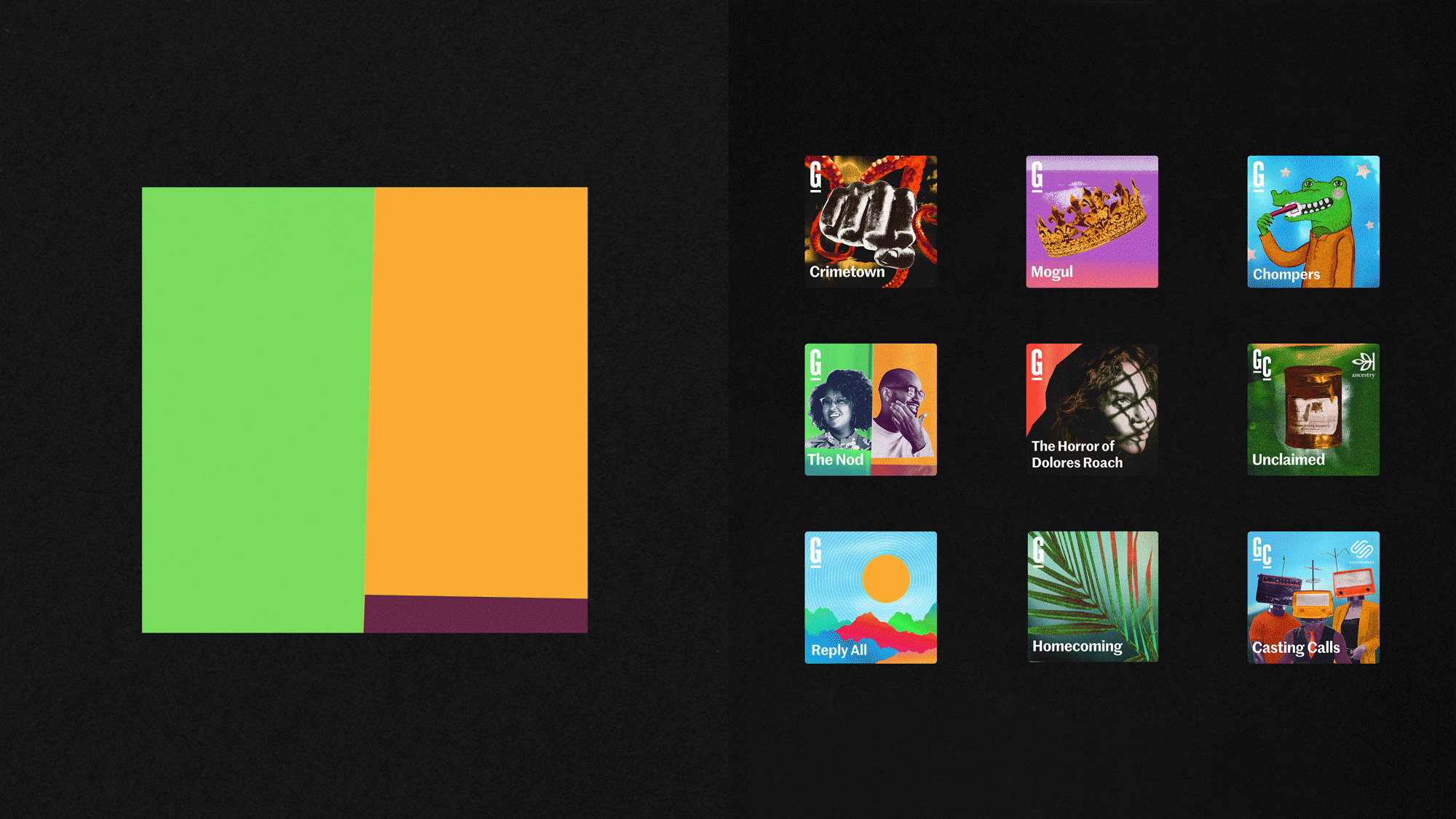




Hui: Food is a separate interest that you have (or perhaps they might be quite interrelated) and we’ve been following your food adventures on social media and are really impressed with your cooking skills. Could you tell us how you got into cooking? Who or what are you influenced by with your cooking?
Joe: It comes from a lot of places. My mom grew up in a family of nine, family dinner was very important. My mom is very health conscious; she doesn’t like to get take out and always wanted to cook. And I’ve spent a lot of time watching her. We were also a family that watched a lot of Food Network and Top Chef.
It started becoming serious after college. Freshman year, I was a new res, they throw you into the pit all by yourself. There’s a kitchen, a stove, and you’re a poor 18-year-old that can’t go out and buy food, so you have to figure it out, out of necessity. My first year out of college, I was burned out and wasn’t sure if I wanted to stay in the city or not. My best friends were people I’ve know since elementary and they were all here; we were all commuting on Metro-North to New York everyday to work. It was exhausting, 3 or 4 hours a day in transit, so you have no energy for social life. We would get together on the weekends but we were so tired and just ended up chilling at somebody’s kitchen and cooking elaborate meals.
That’s how it started, we would try to outdo each other by bringing the better dish to dinners on Saturdays. Out of that crew, one of the guys is now a professional chef, and we still get together. They are all going to come over tonight. I have an al pastor shoulder that I’m marinating for tonight. I bought a smoker from a Texan math teacher in Bushwick a month ago. He was teaching math but COVID happened; he was running an illegal barbecue restaurant out of his backyard. He decided to move back to Texas, and he was selling the smoker on Craigslist for $300, which is a huge bargain. I’ve been obsessed with barbecue for a year.






When Hui and I were talking, that was when I was on a wave of learning Sichuan recipes. You sent me Lady and Pups, which is still one of my favorite recipe blogs. I’m really into Chinese Cooking Demystified, an amazing YouTube channel. This woman named Stephanie, I believe she’s from Shenzhen, she lives there with her husband who is American. She makes the videos, she cooks, and he narrates them. They are very much about where recipes originate from in China. There’s 8 schools of cooking and they all have their subgenres. It’s more complex as anywhere else. Indian cuisine is another one.
I was really obsessed with Szechuan cooking at the time. Now I'm really into barbecue. Barbecue’s not something I grew up, despite both my parents are from the midwest. Sometimes I fantasize the version of me growing up in Ohio, instead of on the East coast. All of these interests are powered by YouTube. I followed this dude, Malcolm Reed, he has a channel called How to Barbecue Right. He does all these barbecue projects, he’s super warm. We live in a golden age of YouTube cooking videos. RIP Bon Appetit; their faults were real. There’s so many homegrown ones that are even more interesting. You are watching people in these places, they are of the place, telling authentic stories. To the people who are bummed about Bon Appetit, take one step deeper. Do the research. There is so much stuff out there and so easy to find it.
Hui: Through talking to you, it seems that you are someone who delves into research to understand the history and culture of anything you’re taking into consideration.
Joe: To quote Kanye West, “Everything is exactly the same.” If you’re cooking, or composing a dish, or creating a design system, or playing music with other people, which is another love of mine, it’s all exactly the same. What are you creating unconsciously and what conscious decisions are you making? Like an abstract painting or action painting, where you're just responding, pure motion and instinct, which is great after a day of work where you're having to be responsible for the design systems you’re crafting. It is as Kanye would say, it is exactly the same.
Hui: It’s been so amazing chatting with you, Joe! Thank you for your time and hope you have a great evening of al pastor tonight!
Photography by Joe Haddad
Interview by NSC



